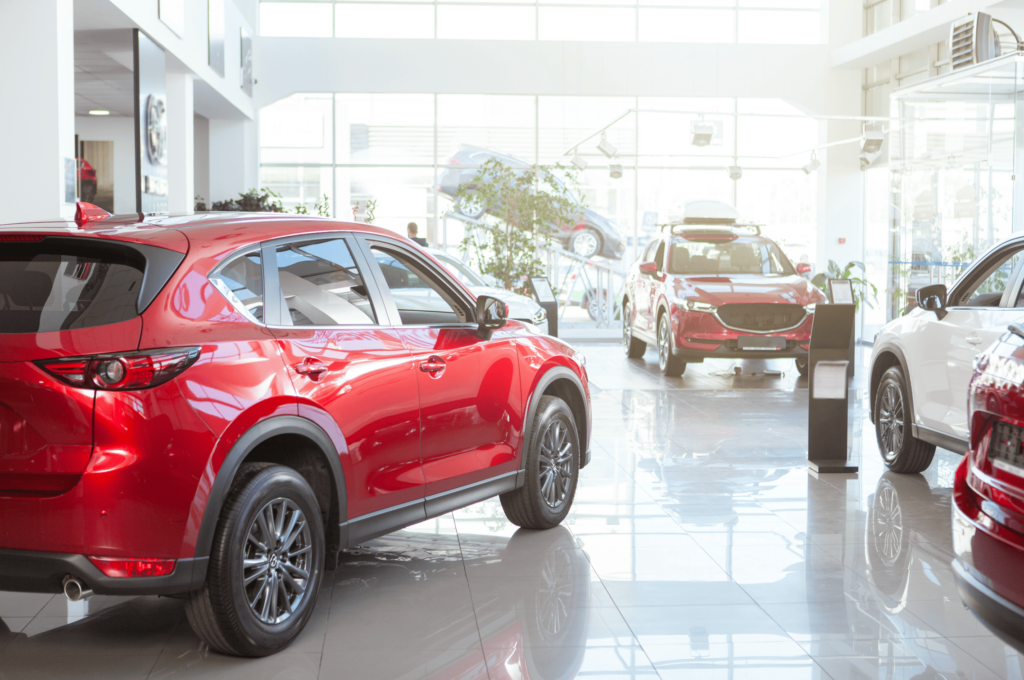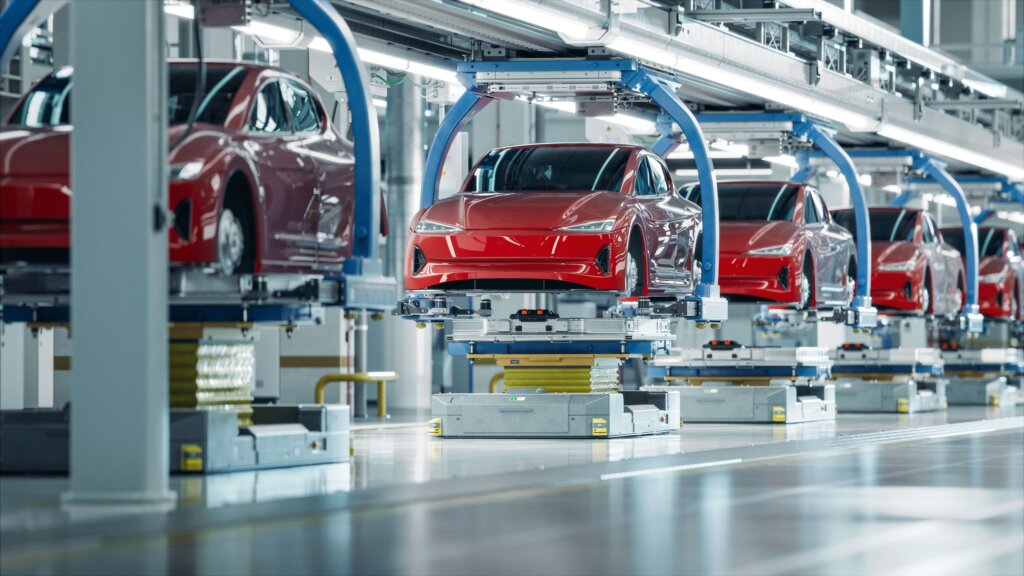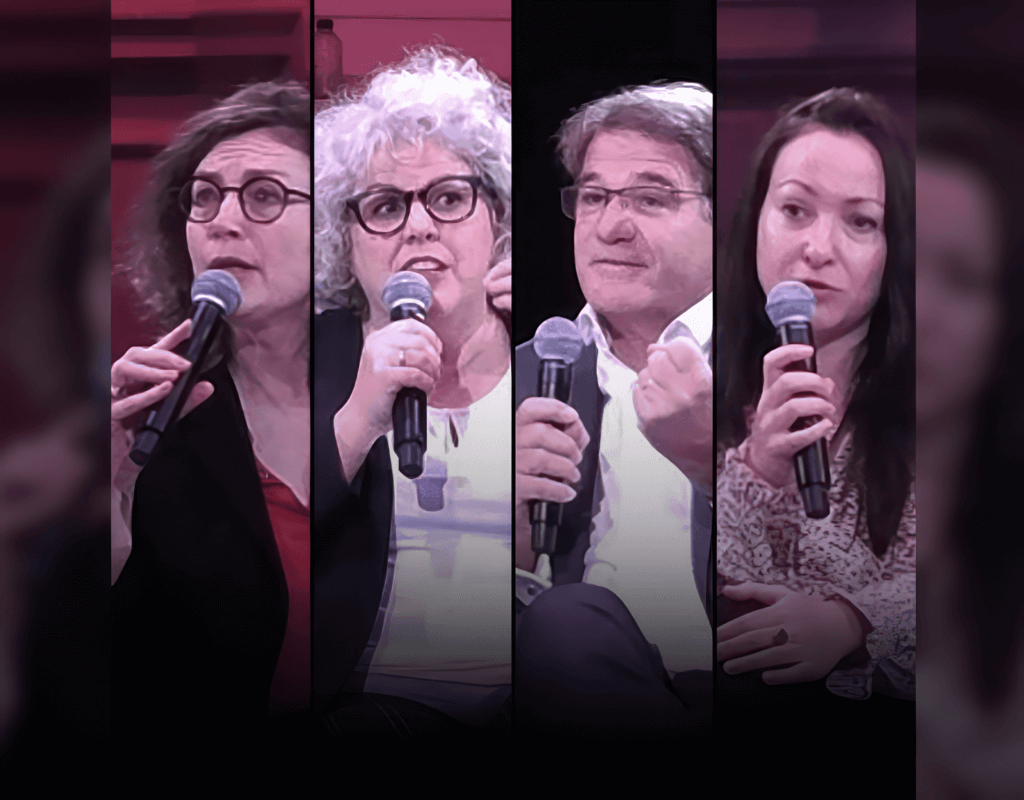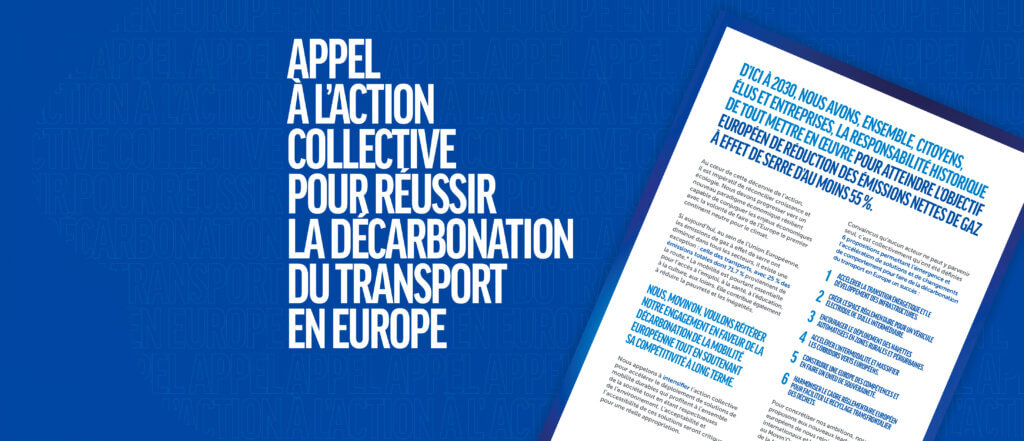First U.S. Zero-Emissions Freight Goal Activates the Industry
Trucks, trains, ships, and planes move 55 million tons of goods worth more than $49 billion around the United States every day, the White House reports. On April 24, 2024 it became official U.S. policy to achieve zero-emissions freight transport nationwide. From now on, all freight moving around the United States by truck, rail, plane or ship is subject to the new goal, the White House and federal officials announced.
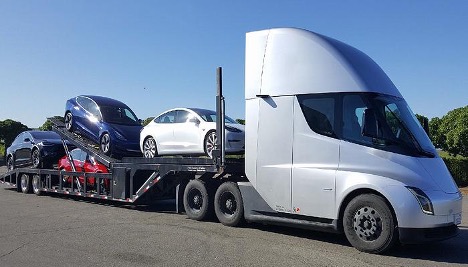
The Biden Administration is offering more than $1.5 billion in funding and incentives to the transition to zero-emission heavy-duty trucks and has pledged to develop a whole-of-government strategy to accomplish its zero-emissions freight transport goal.
The new goal will mean an energized market for zero-emission trucks, such as battery electric or fuel cell electric vehicles powered by hydrogen, which do not produce tailpipe emissions. Today, some seven million medium- and heavy-duty freight trucks circulate throughout the United States, almost all powered by internal combustion engines.
Diesel is the primary fuel that powers the majority of U.S. commercial trucks. These vehicles generate more than 25 percent of total greenhouse gas emissions from the transportation sector, such as carbon dioxide and nitrogen oxides, which threaten heart and lung health, and they must be replaced.
On Wednesday, the Biden Administration unveiled key steps to accomplish its zero-emissions freight transport goal – major new funding programs, a new initiative to track and accelerate deployment of charging and refueling infrastructure, and a new program to standardize heavy-duty vehicle charging depots.
In November 2022, the United States committed that zero-emission truck sales nationwide would reach 100 percent in 2040. That would mean the share of zero-emission trucks in operation must grow from less than one percent today to more than 75 percent in 2050 for all medium- and heavy-duty trucks, according to an April 2023 report by McKinsey & Company, an American multinational strategy and management consulting firm.
This shift could result in a roughly 20 percent reduction of greenhouse gas truck emissions by 2035 and more than 75 percent by 2050. McKinsey reported.
To support the new goal, the U.S. Environmental Protection Agency Wednesday announced nearly $1 billion for a new Clean Heavy-Duty Vehicles Grant Program that will fund the replacement of millions of polluting heavy-duty vehicles with zero-emission vehicles.
The 2024 Clean Heavy-Duty Vehicles Grant Program will support the adoption and deployment of eligible Class 6 and 7 zero-emission vehicles while also funding zero-emission vehicle fueling infrastructure and workforce development and training. Across the nation, over three million Class 6 and Class 7 vehicles are currently in use as school buses, refuse haulers, utility and delivery trucks.
In the United States, the transportation sector is the largest source of greenhouse gas emissions, and a foremost source of health-harming air pollution, according to the EPA..
Most of the vehicles eligible for replacement under the new grant program are powered by internal combustion engines that pre-date recent EPA emission standards. These vehicles emit harmful pollutants like nitrogen oxide, fine particulate matter, and greenhouse gases.
Pollution from these vehicles is linked to respiratory and cardiovascular disease, among other serious health problems. Children, older adults, those with preexisting heart or lung disease, and those of lower socioeconomic status are the most vulnerable and are at a higher risk for these health impacts.
The Clean Heavy-Duty Vehicle grants advance President Biden’s commitment to environmental justice and the Justice40 Initiative, which sets the goal that 40 percent of the overall benefits of certain federal investments in climate and clean energy will flow to disadvantaged communities marginalized by underinvestment and overburdened by air pollution.
Funded through the Inflation Reduction Act of 2022 under President Biden’s Investing in America Agenda, the EPA will use the $1 billion to award competitive grants for projects to reduce climate and air pollution from these heavy-duty vehicles.
The Inflation Reduction Act requires that at least $400 million of the program’s funding go to projects that will serve one or more communities dealing with significant pollution as defined by EPA’s National Ambient Air Quality Standards.
“PRESIDENT BIDEN AND HIS ENTIRE ADMINISTRATION ARE WORKING TO ENSURE EVERY COMMUNITY CAN BREATHE CLEAN AIR. EPA’S CLEAN HEAVY-DUTY VEHICLES GRANT PROGRAM WILL SLASH CLIMATE AND AIR POLLUTION AND ENHANCE THE COUNTRY’S INFRASTRUCTURE BY FUNDING THE DEPLOYMENT OF ZERO-EMISSINS VEHICLES AND INSTALLATION OF SUPPORTING INFRASTRUCTURE.” – Michael Regan, Administrator, U.S. Environmental Protection Agency
“The program’s historic investment in zero-emission vehicles will secure our nation’s position as a global leader in clean technologies that address the impacts of climate change,” Regan predicted.
Separate Grant Competitions Fund School Buses, Commercial Trucks
To encourage participation in this grant opportunity, EPA is providing two separate sub-program competitions under this single Notice of Funding Opportunity.
The School Bus Sub-Program is for applicants replacing school buses, while the Vocational Vehicles Sub-Program is for applicants replacing non-school bus Class 6 and 7 vehicles – including box trucks, refuse haulers, dump trucks, street sweepers, delivery trucks, bucket trucks, and utility trucks.
Sue Gander, who heads the nonprofit World Resources Institute’s Electric School Bus Initiative, said, “This program is a game-changer for communities across the country that want to transition to clean buses and trucks – and breathe cleaner air – but don’t have the means to do so. As we commemorate Earth Day this week, this is good news for neighborhoods everywhere.”
“Heavy-duty vehicles emit huge amounts of air pollution that harm the health and wellbeing of our children and communities.” Gander said, “We are pleased to see the program cover vehicle costs as well as the purchase and installation of infrastructure, plus training for drivers and mechanics, all of which are essential for this transition.”
“This program marks a critical milestone in the transition of the country’s nearly half a million school buses from diesel and other fossil fuels to the cleaner, quieter rides that our kids deserve,” she said.
EPA expects that 70 percent of available funding will be for school bus projects and the other 30 percent of available funding will be for vocational vehicles projects. Eligible applicants for both competitions include States, Indian Tribes, territories, municipalities, school districts, and nonprofit school transportation associations.
The deadline to apply for the 2024 Clean Heavy-Duty Vehicles Grant Program is July 25, 2024. EPA expects to announce awards by the end of this year.
This funding opportunity builds on the success of previous programs implemented by the Biden Administration’s EPA, including the Diesel Emissions Reduction Act program, which reduces harmful emissions from older diesel engines, and the Clean School Bus Program, which funds clean and electric school buses under the Bipartisan Infrastructure Law.
The new national zero-emissions freight goal is another push from the Biden Administration toward a cleaner freight fleet. It comes just three weeks after EPA announced $20 billion in grant awards under the historic $27 billion Greenhouse Gas Reduction Fund, also created under the Inflation Reduction Act.
The three awardees under the $14 billion National Clean Investment Fund and five selectees under the $6 billion Clean Communities Investment Accelerator will create a national clean financing network for clean energy and climate solutions across sectors, ensuring communities can access the capital they need to participate in a cleaner, more sustainable economy.
By funding tens of thousands of projects, this national clean financing network is expected to mobilize private capital to reduce climate and air pollution, energy costs, improve public health, and create good-paying clean energy jobs.
“In addition to all the progress we’re making to electrify light-duty vehicles, today’s funding from the EPA will catalyze projects that bring electric school buses, garbage trucks, and delivery vans to neighborhoods across America – reducing pollution in our communities and creating good-paying manufacturing jobs,” John Podesta, senior advisor to the President for international climate policy, said Wednesday, announcing the new zero-emissions goal.
ExxonMobil, Trucking Industry Want Renewable Diesel
Tanya Vetter, vice president of strategy and planning for Product Solutions at ExxonMobil, the largest non-governmental company in the energy industry, said, “We have long supported an economy-wide price on carbon as the most efficient way to reduce CO2 [carbon dioxide] emissions, but a sectoral-based policy could offer a meaningful, more incremental first step.”
“For example,” Vetter said, “we believe the fastest, lowest-cost option to reduce transportation emissions is a federal low carbon fuel standard that necessarily includes well-to-wheel vehicle standards. Such a policy would recognize and encourage emission reductions from production, processing and on-road use, regardless of whether a vehicle has a tailpipe.”
Vetter cited the U.S. Energy Information Administration’s conclusion that it may take decades for electric vehicles and hybrids to account for even half of global vehicle sales. Exxon Mobil’s investments in lithium will support that development, and other technologies the company is working to deploy more broadly, like carbon capture, hydrogen and biofuels, can help society accelerate the path to net zero, while allowing consumers to still choose the type of vehicle they drive, Vetter said.
ExxonMobil produces about three percent of the world’s oil and about two percent of the world’s energy. “Fuel producers can also reduce the carbon intensity of refining processes and fuels to help drive emission reductions,” Vetter said. “We’re already working on a goal to supply the market with 200,000 barrels per day of lower-emission fuels by 2030, including renewable diesel, which is compatible with today’s engines and fueling infrastructure.”
Many long-haul truckers agree with a research report issued by the American Transportation Research Institute (ATRI) in April 2024, which finds renewable diesel is a promising solution for lowering the trucking industry’s carbon dioxide emissions, less costly than battery electric technology.
Produced from food oils and organic waste, renewable diesel is “chemically identical to petroleum diesel” and can be mixed with petroleum diesel in various ratios or used as a standalone drop-in fuel in a traditional diesel truck without consequence or aftermarket upfit. It is not a biofuel or biodiesel, which is chemically different than petroleum diesel.
The transportation sector is the end-user for nearly all petroleum diesel consumed in the United States. Across the sector, which includes trucks, buses, rail and maritime, more than 46.4 billion gallons were consumed in 2023. ATRI estimates that, in 2023, the trucking industry consumed most of this diesel, 77.8 percent.
In summary, more than 35 billion gallons of petroleum diesel are consumed annually by the U.S. trucking industry; 28 billion gallons are consumed by the nation’s 3.25 million combination trucks, a configuration with a truck tractor attached to one or more trailers. Semi-trucks, box trucks, vans, coaches, buses, mining equipment, heavy equipment, and other similar vehicles may be combination vehicles.
The consumption of renewable diesel rose to nearly three billion gallons in 2023, up more than 500 percent from 2018, according to the U.S. Energy Information Administration in its January 2024 Monthly Energy Review.
Americans Who Live Near Ports Catch a Break
At least $148 million in grants will go to 11 states and Puerto Rico under the first round of a new $400 million program to improve air quality and reduce pollution for truck drivers, port workers and families that live in port-adjacent communities, the U.S. Department of Transportation’s Federal Highway Administration announced this week.
The Reduction of Truck Emissions at Port Facilities Grant Program aims to reduce pollution from idling trucks at ports while at the same time modernizing infrastructure and strengthening supply chains.
“WHEN TRUCKERS SPEND HOURS IDLING AT PORTS, IT’S BAD FOR DRIVERS, BAD FOR SUPPLY CHAINS, AND BAD FOR NEARBY COMMUNITIES THAT FEEL THE BRUNT OF MORE POLLUTED AIR. THE INVESTMENTS WE ARE ANNOUNCING TODAY WILL SAVE TRUCK DRIVERS TIME AND MONEY AND HELP PORTS REDUCE CONGESTION AND EMISSIONS, WHILE MAKING THE AIR MORE BREATHABLE FOR WORKERS AND COMMUNITIES.” – Pete Buttigieg, U.S. Transportation Secretary
Port-serving truck emissions reductions mean replacing diesel-powered trucks with zero or low emissions electric or alternative fuel-powered trucks, constructing electric vehicle charging infrastructure,
For example:
California is receiving $49.7 million for port improvements. The Ports of Long Beach, Oakland and Los Angeles will receive funding to replace diesel- and gas-powered trucks and shuttle buses with zero-emission technologies, electric trucks and EV chargers.
Texas is receiving $26.9 million for improvements to the Port of Houston, including 30 new zero-emission, short-haul trucks and portable electric chargers for battery electric vehicle trucks. The grant will also pay for the installation of new automated terminal operating systems to reduce truck idling times.
Georgia is receiving $15.3 million toward improvements at the Port of Savannah, including a large-scale charging project near the port, replacement of diesel trucks, and expanding the use of low-emission and zero-emission equipment.
Additionally, on February 28, the EPA announced the launch of the $3 billion Clean Ports Program to fund zero-emission port equipment and infrastructure to tackle the climate crisis and improve air quality at U.S. ports as part of President Biden’s Investing in America agenda.
Rail Industry Objects to California's Zero-Emission Locomotives
The Association of American Railroads (AAR) on April 23 filed comments with the EPA, calling on the agency to reject an authorization request from the California Air Resources Board to implement a locomotive regulation that was finalized last year. The rule bans the operation of any locomotive that is 23 years or older from operating in California starting in 2030 for switch, industrial, and passenger locomotives, and in 2035 for line haul locomotives. New locomotives can only operate in the state if they are “zero-emissions locomotives.”
AAR argues the regulation is not feasible and will yield counterproductive environmental results while disrupting the interconnected nature of the national freight rail network – prematurely retiring viable locomotives that help make rail the most fuel-efficient way to move goods over land.
“Railroads continue to invest billions to reduce their environmental impact, a major reason why carriers contribute less than one percent of all U.S. greenhouse gas (GHG) emissions,” said Ian Jefferies, president and CEO of the Association of American Railroads. “Yet California insists on using unreasonable, flawed assumptions to support a rule that will not result in emissions reductions.”
Public comments on the proposed rule show that a group of U.S. industries, led by the National Association of Manufacturers and representing trucking, retailers, builders, contractors, beer, wholesalers, food companies, warehousing, lumber, paper, wood, plastics, fuel providers, fuel stations and a range of energy sources, argue the rule would hurt millions of Americans.
In Congress, 10 Republican Senators, joined by Democrat Joe Manchin of West Virginia, penned a letter to the EPA arguing that, “Rail transportation remains the most fuel-efficient mode of transporting freight by land. A single locomotive can move one ton of freight 500 miles on a single gallon of fuel and can pull the equivalent freight of nearly 100 trucks. Railroads represent less than two percent of all transportation-sector greenhouse gas emissions, less than one tenth of the greenhouse gas emissions from the tucking sector. Approval of CARB’s authorization request could inadvertently increase overall emissions by forcing more shippers to utilize trucks as opposed to rail-based transportation.”
The locomotive regulation remains the subject of litigation in California. The EPA is not obligated to rule on the authorization request and is not bound by a deadline.
Support for Zero-Emissions Freight is Strong
Don Anair, research director for the Clean Transportation Program at the nonprofit Union of Concerned Scientists, said of the National Zero-Emission Freight Corridor Strategy announced in March that gives direction to the zero-emissions freight goal, “The charging infrastructure deployed through this strategy will allow electric freight trucks to more quickly replace the most heavily polluting vehicles on our roads,” he said.
“Together with strong vehicle emissions standards, this plan will help encourage the adoption of electric medium- and heavy-duty vehicles. We can, and must, build the clean transportation system of the future, getting people and goods where they need to go in vehicles that do not foul the air or contribute to climate change.”
“Targeting investments to key corridors makes electrification an extremely attractive investment for fleets operating on those routes, building momentum for electric trucks to operate across the country. It’s a foundational step and will provide a strong model for what the highways of the future will look like.”
“The future is electric for how we move goods across this country. We’re incredibly excited to see this commitment from the Biden Administration to modernize our freight sector with a whole-of-government approach to get to zero emissions,” said Athena Motavvef, legislative representative on the Right To Zero campaign at Earthjustice, the public interest environmental law firm.
The technology to make a zero-emissions freight goal achievable is developing quickly.
For instance, Gage Zero, a fleet electrification company in Austin, Texas that deploys, owns, and operates charging infrastructure, has developed a multi-fleet charging hub that allows fleets of many vehicle types to use the same site to charge their electric trucks.
Gage Zero provides the upfront capital to develop, own, and operate the hubs, allowing fleets to sign up as customers.
Cargo Airlines Are on Board
On April 18, the International Air Transport Association (IATA) a trade association representing 320 airlines, including all major U.S. cargo airlines, released the “Aviation Net Zero CO2 Transition Pathways Comparative Review.”
The first publication to compare 14 leading net zero CO2 transition roadmaps for aviation, the report found that all roadmaps assume that sustainable aviation fuels will be responsible for the greatest amount of CO2 reductions by 2050.
The role of sustainable aviation fuels varies from 24 to 70 percent, with a median value of 53 percent. This wide range reflects the uncertainties over government action, the level of investments, cost of production, profit potential, and access to feedstocks.
Technology and operational efficiency improvements are expected to contribute to about 30 percent of the emissions reduction in 2050 in all scenarios.
To achieve net zero CO2 emissions in 2050, almost all the global roadmaps suggest that the aviation sector will need help from market-based measures and carbon removals to address the residual emissions in 2050.

Fedex carries more freight than any other airline, and the company is already on board with the zero-emissions program. In addition to motorized vehicles, FedEx Express maintains a fleet of 700 cargo aircraft, one of the largest civil aircraft fleets in the world.
Fedex says its new aircraft purchases are focused on twinjets such as the fuel-efficient Boeing 767 and 777 aircraft. The 767 is around 30 percent more efficient than older planes Fedex used.
Also, Fedex is converting its entire parcel pickup and delivery fleet to zero-emission electric vehicles, and investing in efficient facilities, renewable energy, and other energy management programs.
Finally, Fedex has pledged $100 million to help establish the Yale Center for Natural Carbon Capture, where researchers will focus on ways to remove and store Earth’s excess carbon.
United Parcel Service, UPS, Fedex’s main competitor, has embraced the goal of reaching net-zero emissions by 2050. Because air is the mode of transportation that releases the most emissions per ton-mile, UPS says that “making headway in this area can have drastic impacts on a company’s overall transportation-related emissions.”
At a June 2021 investor and analyst conference, UPS representatives said the company will reduce CO2 emissions by half per package delivered for global small package operations by 2035, using 2020 as the base year.
UPS plans that all its facilities will be powered by renewable electricity by 2035. And finally, sustainable aviation fuel is expected to account for 30 percent of fuel used for the company’s global air fleet by 2035.
“We are creating a new UPS, rooted in the values of the company,” Carol Tomé, chief executive officer at UPS, said in a statement. “Our strategic priorities are evolving to reflect the changing needs of our customers and our business, and what matters most to our stakeholders.”
Automakers Producing Zero-Emissions Cargo Vehicles Today
The Tesla Semi is a battery electric Class 8 semi-truck built by Tesla, Inc. since 2022. Powered by three motors, Tesla claims the truck has about three times the power of a typical diesel semi-truck, a range of 500 miles (800 km), and uses less than two kilowatt hours per mile (1.2 kW⋅h/km).
Production began in October 2022, and initial deliveries were made to PepsiCo on December 1, 2022.
The Tesla Semi has a 1,000 volt powertrain and charging system. Charging is supported at a new Tesla V4 Supercharger, which integrates the open-source North American Charging Standard.
Rivian Automotive, Inc., produces an electric delivery van, the Rivian EDV. This spring, Rivian owners will be able to use an adapter to access over 15,000 compatible Tesla Superchargers across North America, in addition to the 16,000 existing fast chargers to which they already have access.
To keep pace with the scale of EV adoption, the company is building its own network of fast chargers across the country. The initial phase has placed over 424 live Rivian Adventure Network chargers at 70 sites across 22 states.
Rivian is based in Irvine, California, with its manufacturing plant in Normal, Illinois, and other facilities in Arizona; California; Michigan; Vancouver, British Columbia; England; and Serbia. Rivian has plans to build another US$5 billion factory in the State of Georgia.
Daimler Truck North America (DTNA) announced the delivery of its first battery-electric Freightliner eM2 trucks in mid-March, after starting production of the medium-duty electric vehicles at the end of 2023.
The Freightliner battery-electric eM2, manufactured at DTNA’s plant in Portland, Oregon, has been distributed to customers across the country. PITT OHIO, a transportation, warehouse, and logistics company, was first to deploy the eM2 trucks out of Cleveland, Ohio.
There are many manufacturers across the United States and around the world producing electric and fuell cell heavy-duty and medium-duty electric trucks. To find a complete list at Wikipedia, click here.
Toute l’actualité de Movin’On
dans votre boîte mail
Auteur
Partager
Tweets de @movinonconnect
Movin'On 2035 TODAY EP02 - Circular Economy & Competitivity
Movin’On 2035 TODAY EP01 – Fair Mobility for All https://x.com/i/broadcasts/1yNxagBrWZbGj
✨ THAT'S A WRAP!
Movin'On Summit 2024 has just concluded in Brussels!
More than 350 leaders and experts in sustainable mobility gathered to exchange ideas, collaborate, and share their vision for desirable and decarbonised mobility in Europe. Together, we explored ways to build…
🔴 Live from #MovinOnSummit2024
@AshaSumputh has just invited Denis Machuel, CEO at @AdeccoGroup and Florent Menegaux, President of the @Michelin Group & President of Movin'On
L’actualité de la mobilité durable
Découvrez les dernières tendances, des analyses thématiques et nos prochains rendez-vous


